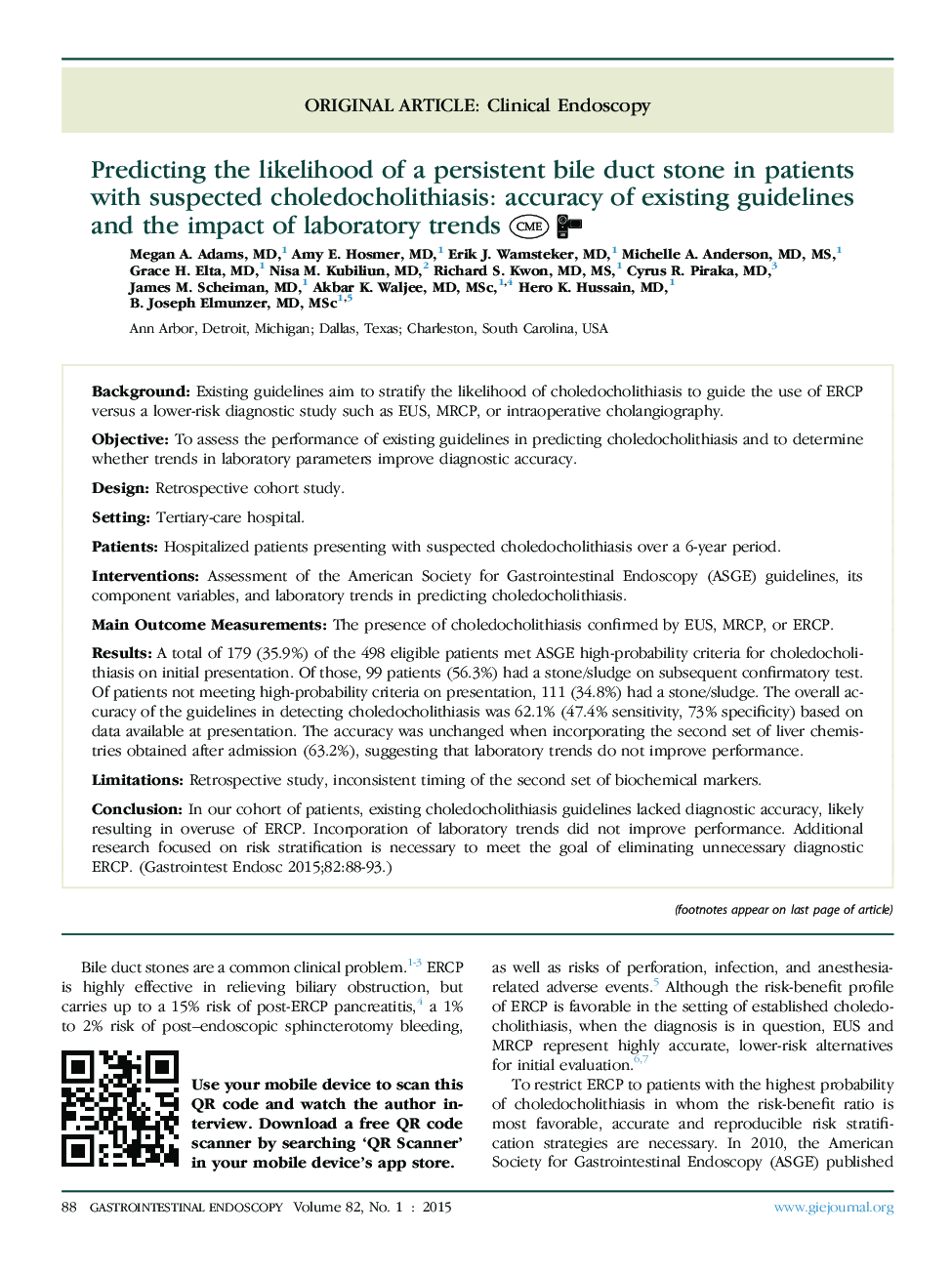| کد مقاله | کد نشریه | سال انتشار | مقاله انگلیسی | نسخه تمام متن |
|---|---|---|---|---|
| 6097646 | 1210291 | 2015 | 6 صفحه PDF | دانلود رایگان |
BackgroundExisting guidelines aim to stratify the likelihood of choledocholithiasis to guide the use of ERCP versus a lower-risk diagnostic study such as EUS, MRCP, or intraoperative cholangiography.ObjectiveTo assess the performance of existing guidelines in predicting choledocholithiasis and to determine whether trends in laboratory parameters improve diagnostic accuracy.DesignRetrospective cohort study.SettingTertiary-care hospital.PatientsHospitalized patients presenting with suspected choledocholithiasis over a 6-year period.InterventionsAssessment of the American Society for Gastrointestinal Endoscopy (ASGE) guidelines, its component variables, and laboratory trends in predicting choledocholithiasis.Main Outcome MeasurementsThe presence of choledocholithiasis confirmed by EUS, MRCP, or ERCP.ResultsA total of 179 (35.9%) of the 498 eligible patients met ASGE high-probability criteria for choledocholithiasis on initial presentation. Of those, 99 patients (56.3%) had a stone/sludge on subsequent confirmatory test. Of patients not meeting high-probability criteria on presentation, 111 (34.8%) had a stone/sludge. The overall accuracy of the guidelines in detecting choledocholithiasis was 62.1% (47.4% sensitivity, 73% specificity) based on data available at presentation. The accuracy was unchanged when incorporating the second set of liver chemistries obtained after admission (63.2%), suggesting that laboratory trends do not improve performance.LimitationsRetrospective study, inconsistent timing of the second set of biochemical markers.ConclusionIn our cohort of patients, existing choledocholithiasis guidelines lacked diagnostic accuracy, likely resulting in overuse of ERCP. Incorporation of laboratory trends did not improve performance. Additional research focused on risk stratification is necessary to meet the goal of eliminating unnecessary diagnostic ERCP.
Journal: Gastrointestinal Endoscopy - Volume 82, Issue 1, July 2015, Pages 88-93
